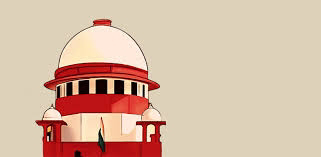History Of Supreme Court of India | ProAdvocate
The Supreme Court of India is the highest judicial body under the Constitution of India. Article 124 of the Constitution states that “There shall be a Supreme Court of India. The Supreme Court came into existence with the coming into force of the Constitution on 26 January 1950. The Supreme Court of India was located in the Old Parliament House before it shifted to the present building at Tilak Marg, New Delhi in 1958.
On 28 January 1950, two days after India became a sovereign democratic republic, the Supreme Court was inaugurated. It was inaugurated in the Narendra Mandal of the Old Parliament House, where the Union Court of India functioned for 12 years, from 1937 to 1950.
The inaugural ceremony began at 9:45 a.m. It was attended by Justice Shri Harilal J. Kania, the first Chief Justice of India and Justices of the Federal Court – Justices Shri Syed Fazal Ali, Shri M. Patanjali Shastri, Shri Mehar Chand Mahajan, Shri Bijan Kumar Mukherjee and Shri S.R. Das, Chief Justices of the High Courts of Allahabad, Bombay, Madras, Orissa, Assam, Nagpur, Punjab, Saurashtra, Patiala and East Punjab States Union, Mysore, Hyderabad, Madhya Bharat and Travancore-Cochin. The ceremony was also attended by the Prime Minister of India, ambassadors and diplomatic representatives of foreign states, Attorney General of India M.C. Setalvad, Advocates General of Bombay, Madras, Uttar Pradesh, Bihar, East Punjab, Orissa, Mysore, Hyderabad and Madhya Bharat and a large number of advocates. In order to ensure that the Rules of the Supreme Court were published and the names of all advocates and agents of the Federal Court were entered in the roll of the Supreme Court, the inaugural ceremony was entered as a record of the Supreme Court.
After the inauguration on 28 January 1950, the Supreme Court began its sittings in a part of the old Parliament House. In 1958 the Court moved to a new building. The first President of India, Dr. Rajendra Prasad inaugurated the present building of the Supreme Court of India on 4 August 1958. The shape of the building reflects the image of the scales of justice. It has a 27.6 m high dome and a spacious portico. The central wing of the building is the main beam of the scales. The Chief Justice's Court is the largest of the courts located in the centre of the central wing. The courtyard in front of the Chief Justice's Court has a life-size statue of Mahatma Gandhi, the apostle of truth and non-violence. The statue was unveiled by the 26th Chief Justice of India, A.M. Ahmadi on 1 August 1996.
There is also a 7-foot-high statue of Dr. B.R. Ambedkar, which was unveiled by the Hon'ble President of India, Smt. Draupadi Murmu on 26 November 2023 in the presence of Justice Dr. D.Y. Chandrachud, the 50th Chief Justice of India. The statue, which hails the architect of the Constitution, shows him dressed in a lawyer's robe and holding a copy of the Constitution in his hand. To visit the building, one can book a guided tour from the Supreme Court website or obtain a visitor pass from the Suswagatam portal or the Supreme Court front desk.
The original building was expanded thrice – first in 1979, second in 1994 and then in 2015. In 1979, two new wings – Eastern Wing and Western Wing were added to the complex. All the wings of the building have a total of 19 court rooms. In 1994, the building was expanded for the second time in which Eastern and Western Wing were added.
The third expansion – the new extended section near the Supreme Court Museum was inaugurated on 4 November 2015 by the then Chief Justice of India, Justice Shri H.L. Dattu, and some sections of the existing building were shifted to the new building. On 17 July 2019, the Hon’ble President of India, Shri Ram Nath Kovind inaugurated the additional building complex of the Supreme Court of India. The additional complex, with a total built-up area of 1,80,700 sq. m, houses five functional blocks and a service block. The building motif is inspired by the curvature, colour scheme, sandstone façade and the original architecture of the Supreme Court. The additional complex also houses the new Judges' Library.
The original Constitution of 1950 envisaged the Supreme Court with a Chief Justice and 7 puisne Judges - leaving it to Parliament to increase this number. In the initial years, all the Judges of the Supreme Court sat together (in a Bench) to hear cases presented before them. In view of the increase in workload, Parliament increased the number of Judges from 8 in 1950 to 11 in 1956, 14 in 1960, 18 in 1978, 26 in 1986, 31 in 2009 and 34 in 2019 (the current number). Today, judges sit in Benches of two and three and come together in larger Benches of 5 or more Judges (Constitution Benches) to decide conflicting judgments among the Benches of the Supreme Court or any important question relating to the interpretation of the Constitution.
The proceedings of the Supreme Court are conducted in English. The practice and procedure of the work of the Registry of the Judicial Side is regulated by the Supreme Court Rules, 2013 and the Practice and Procedure and the Handbook of Office Procedure. The Supreme Court Officers and Servants (Conditions of Services and Conduct) Rules, 1961 provide for the conditions of service and conduct of employees attached to the Supreme Court of India.









Post a Comment